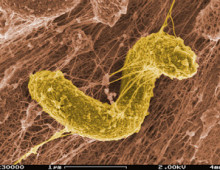Brown mercury-producing bacterium in Medical News Today
“What is not known are the genes or the proteins that allow these bacteria to mediate the transformation,” said ORNL’s Steven Brown, who led a research team to sequence the genome of a bacterium in the Desulfovibrio genus that is capable of methylating mercury. The new genome, sequenced at the California-based DOE Joint Genome Institute… [Read More]

